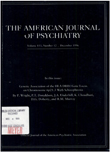Somatization symptoms among patients using primary health care facilities in a rural community in Nigeria
Abstract
OBJECTIVE: The somatic presentation of psychic distress among Africans is different from that in the West, and the prevalence of somatization symptoms suggests that they could be usefully incorporated in screening instruments. This report examines the prevalence of somatization symptoms among users of health care facilities in a rural community in southwestern Nigeria. It also examines the correlation between the presence of these symptoms and scores on instruments that assess psychiatric morbidity. METHOD: Over a 5-month period in 1991, 865 adults using five primary health care facilities or seeking help from voluntary village health assistants were assessed with the 28-item General Health Questionnaire and two World Health Organization instruments, the Self-Reporting Questionnaire and the Brief Disability Questionnaire. The somatization symptoms investigated included feelings of heat, peppery and crawling sensations, and numbness. RESULTS: About 20% of the subjects admitted experiencing at least one somatization symptom, while 8.2% fulfilled operational criteria for probable psychiatric "caseness" on the basis of somatization alone. The rate of caseness according to the General Health Questionnaire was 6.4%. The presence of any of the somatization symptoms was significantly correlated with scores on the other test instruments. There were no sex differences in the pattern of somatization. CONCLUSIONS: These symptoms are reliable indexes of psychic distress. In this culture, the sensitivity of standard screening instruments fashioned in the West can be improved by using these symptoms to replace the somatization symptoms contained in those instruments.
Access content
To read the fulltext, please use one of the options below to sign in or purchase access.- Personal login
- Institutional Login
- Sign in via OpenAthens
- Register for access
-
Please login/register if you wish to pair your device and check access availability.
Not a subscriber?
PsychiatryOnline subscription options offer access to the DSM-5 library, books, journals, CME, and patient resources. This all-in-one virtual library provides psychiatrists and mental health professionals with key resources for diagnosis, treatment, research, and professional development.
Need more help? PsychiatryOnline Customer Service may be reached by emailing [email protected] or by calling 800-368-5777 (in the U.S.) or 703-907-7322 (outside the U.S.).



